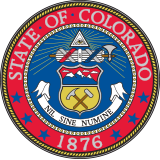j_jtc_2017a_2017-10-11t10:04:47z4 Hearing Summary
Date: 10/11/2017
Location: RM 271
FirstNet: Partner Presentation
COMMITTEE ON JOINT TECHNOLOGY COMMITTEE
| Votes: View--> | Action Taken: |
| <none> | <none> |
01:26 PM -- FirstNet: Partner Presentation
Mr. Justin Shore, representing FirstNet, presented a background on FirstNet, including funding for FirstNet. He described the process of the opting-in and out of the FirstNet network. He noted that there is no mandate for first responders to utilize the FirstNet network. In response to committee questions, Mr. Shore noted that the network provides priority and preemption for data and voice for first responders.
01:43 PM
Mr. Shore clarified that AT&T is required to comply with all federal communications law and that cybersecurity mandates are included in the FirstNet public-private partnership contract. He continued by discussing interoperability between opt-out and opt-in states. Mr. Shore stated, in response to a committee question, that FirsNet is complementary to state digital trunked radio systems, but does not replace them. He also noted that Congress did not mandate the use of FirstNet in order to provide competition that results in lower prices. In response to a committee question, Mr. Shore explained that the business model of a public-private partnership allows AT&T to lease the spectrum to commercial users.
02:02 PM
Professor Ronald Rizzuto and Mr. Larry Satkowiak came to the table to discuss their white paper about FirstNet (Attachment E). Prof. Rizzuto noted the white paper illustrates the capital costs that go into building a network as well as ongoing network costs. The white paper, which was funded by AT&T, estimates that an opt-out decision would obligate Colorado to at least a $1.0 billion investment over the next ten years, after considering the potential $70.8 million to $88.5 million National Telecommunications and Information Administration construction grant. Mr. Satkowiak continued by noting that the paper recommends Colorado opt-in to FirstNet to due to liability issues and the difficulty planning for future technology.
![]() 171011 AttachE.pdf
171011 AttachE.pdf
